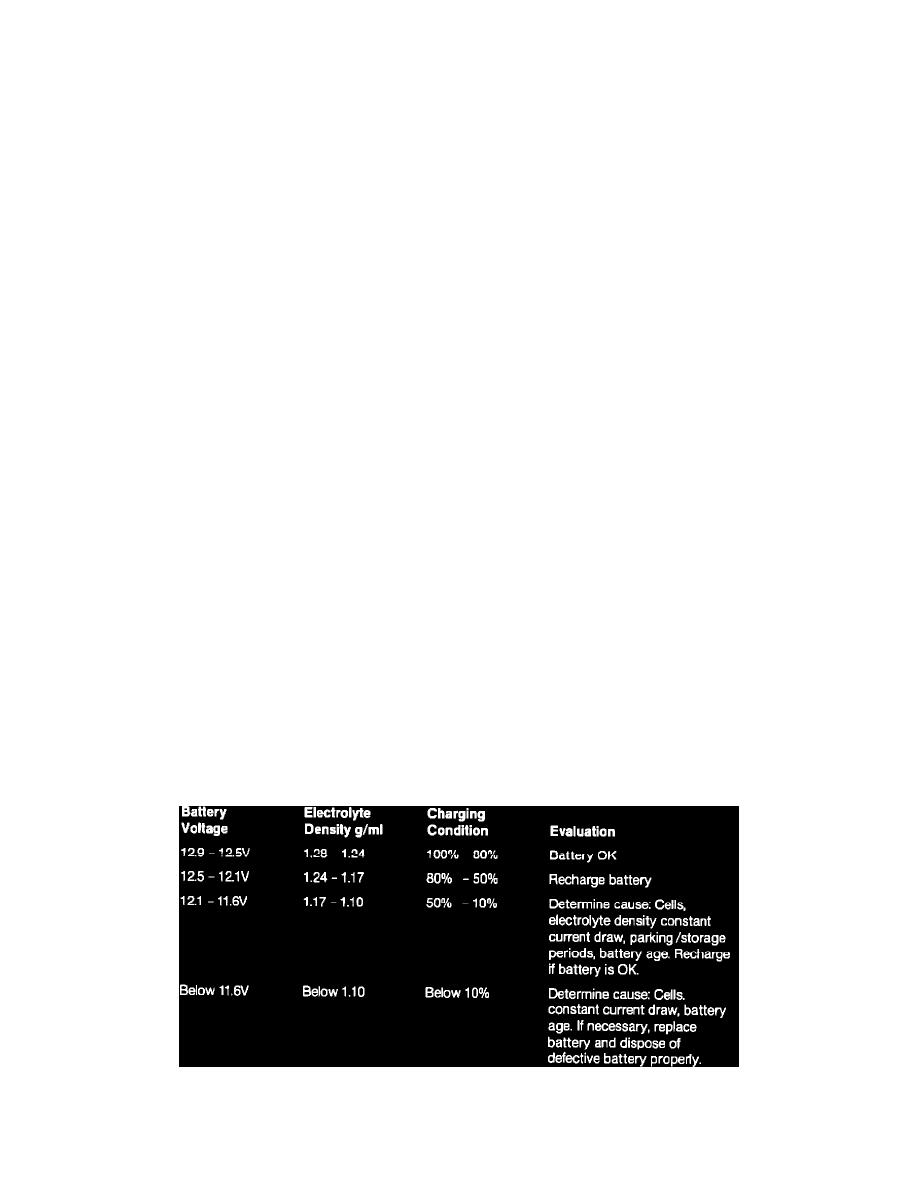911 Carrera 2 Targa F6-3600cc 3.6L SOHC (1992)

under what circumstances the battery failed. The battery must be recharged and reused if not damaged or defective. Do not fast charge the battery under
any circumstances. If the vehicle is a "Fair Weather" vehicle, we recommend you explain to the customer that long parking /storage periods do discharge
the battery. Ask your customer to obtain a simple charging device for maintenance/supplemental charging. Instruct the customer in proper use of the
charger.
5.1 Preservation Charging
To prevent gassing, a simple charging device with maximum 0.05A and voltage limit 13.8V is sufficient for preservation /maintenance charging.
Preservation charging can be performed with battery connected at the following points:
-
Jump start connection (928 only)
-
Cigarette lighter
-
Battery post
5.2 Discharged and Sulfated Batteries
A discharged battery can be recognized by low electrolyte density (one or more cells) and no starting capability. Sometimes the battery can be saved.
Because of the high internal resistance for regeneration, a higher charging voltage with a current limit of maximum 2 amps is necessary.
5.3 Reference Values For Battery Discharge/Parking Time
Referring to a 75 A(h) - Porsche battery and the following preconditions:
-
Battery capacity at least 80% (12.6V or 1.24 g/ml).
-
Constant current draw less than 25 m A.
-
Temperature above 0~ Celsius (32~ F).
-
Normal self-discharge (battery technically OK).
A parking/storage time of 5 weeks with sufficient starting capability is obtainable. With temperatures below 0~ C (32~ F) parking time of 3 weeks with
sufficient starting capability is obtainable.
The parking time is shorter for short distance vehicles and older pre-damaged (sulfated) batteries.
Prior to a longer planned parking /storage period, a battery service should be performed (charge, electrolyte density, battery voltage.)
6. Battery Voltage Checking
Battery voltage is checked with a voltmeter between battery plus and minus pole. The following points should be observed before measuring to receive
definite and valid measuring values:
-
Minimum resting times must be observed after load testing or charging to obtain the actual battery voltage. The measured value will not
correspond to the actual charging condition if resting times are not observed.
Resting Times:
2 hours after battery charging (minimum) (8 hours even better)
1 hour after loading (engine start load testing)
-
The battery must be disconnected when measuring. If necessary, voltage can be checked at the cigarette lighter plug. However, accuracy is not
very high because of the constant current draw influences.
-
Determine approximate battery temperature. The battery temperature equals ambient temperature if the battery was stored for at least 12 hours in
an area with approximate constant ambient temperatures. (See evaluation table.)
6.1 Battery Voltage Correction Values
